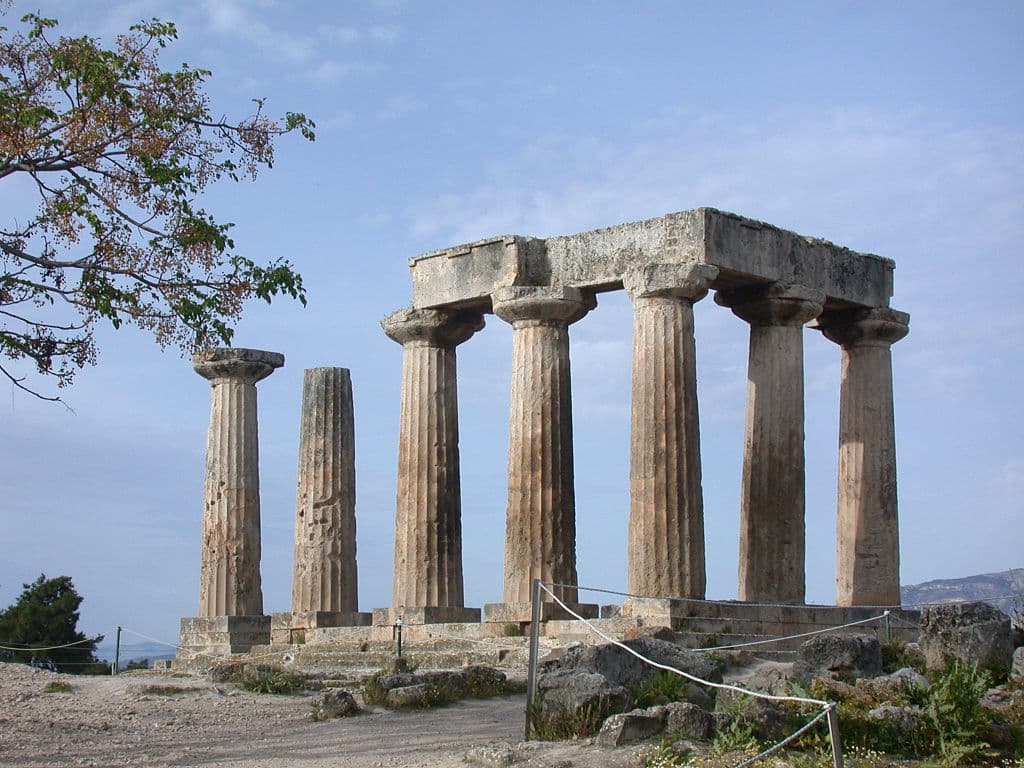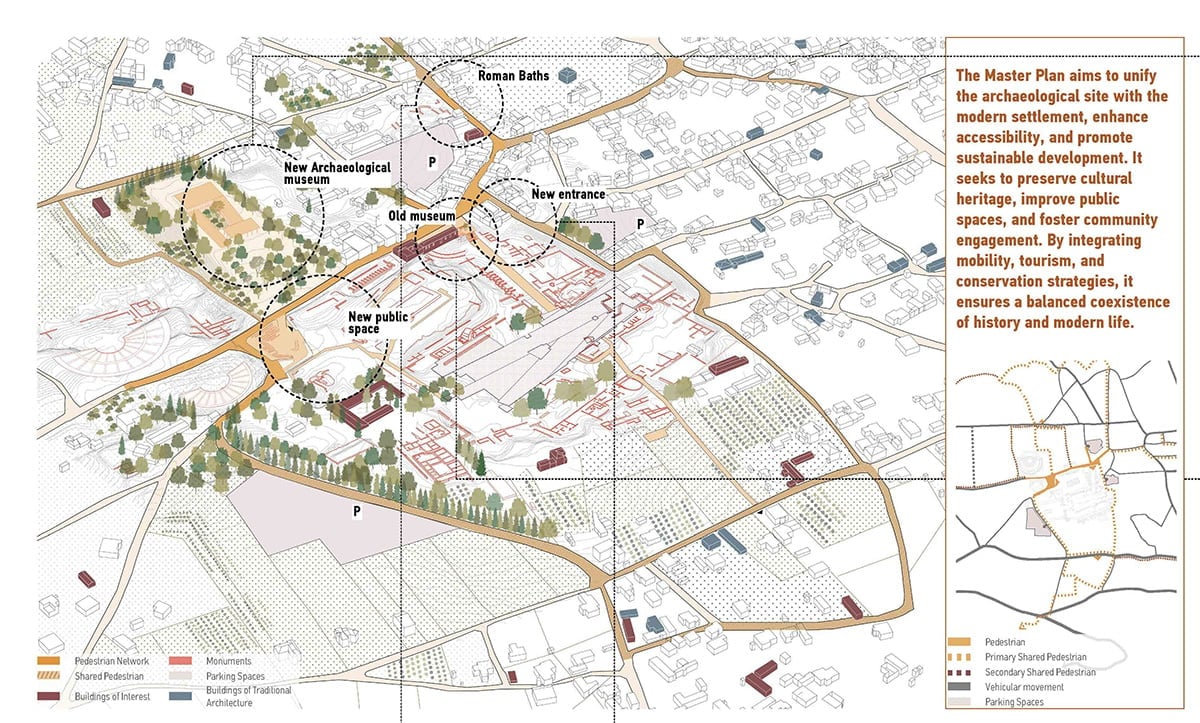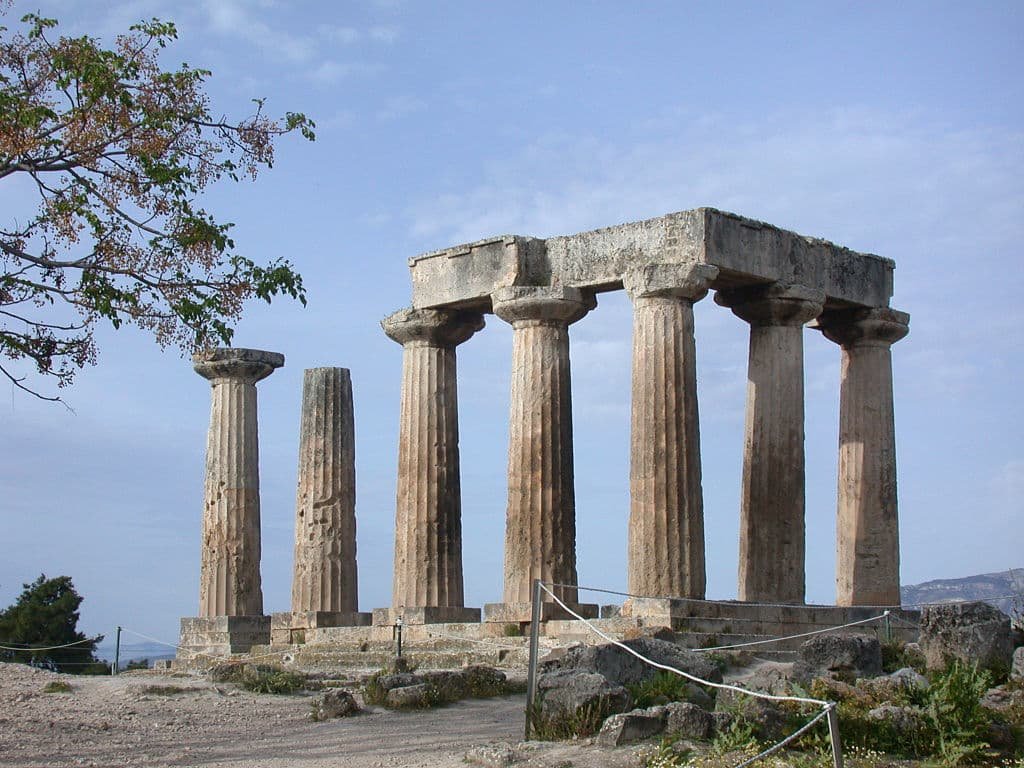
A comprehensive master plan for the regeneration of Ancient Corinth has been honored with a top prize in the European Architectural Heritage Intervention (AHI) Awards.
The project, titled “Bridging Time and Space: Master Plan for the Regeneration of Ancient Corinth, Greece,” won in the Urban Planning category for its innovative and integrated approach to managing one of the country’s most significant archaeological sites.
Developed through a collaboration between Thymio Papayannis and Associates (TPA), the Ephorate of Antiquities of Corinthia, the American School of Classical Studies at Athens, and the Greek Ministry of Culture, the plan outlines a long-term strategy for the sustainable revitalization of the site and its surrounding landscape.
Its core objective is to create a cohesive experience by unifying the various monuments and cultural sites, improving visitor accessibility, and strengthening connections with the modern town of Ancient Corinth. The plan’s strategic interventions are designed to preserve the site’s archaeological integrity while enhancing its relevance for both local communities and tourists.

The AHI jury praised the project for its research-driven and interdisciplinary methodology, highlighting its sensitive balance between historical preservation and contemporary urban needs. The awards celebrate exceptional efforts that foster a constructive dialogue between heritage conservation and modern development across Europe.
Ancient Corinth, located on the isthmus connecting the Peloponnese peninsula to mainland Greece, was one of the most powerful and wealthy city-states of the ancient world. Its strategic location allowed it to control a vital trade route and become a major commercial hub.
Key features and monuments of ancient Corinth
Temple of Apollo: The most prominent surviving monument, a Doric temple dating to the 6th century BC. Its seven monolithic columns are a powerful symbol of the city’s ancient grandeur.
Acrocorinth: The massive rock that served as the city’s acropolis (citadel). Rising dramatically above the plains, it was a fortified position that offered unparalleled views and strategic control over the surrounding area. It features remains from the ancient, Roman, Byzantine, Frankish, Venetian, and Ottoman periods.
Roman Forum (Agora): The heart of the Roman city, a large public square surrounded by stoas, shops, and administrative buildings.
Lernaia Fountain: A complex water system that was essential to the city’s life.
Peirene Fountain: One of the most famous fountains of ancient Greece, a multi-chambered spring house with a rich history in Greek mythology.
Glauke Fountain: Carved out of rock, this fountain is associated with the mythological figure of Glauke.
Lechaion Road: The main road connecting the city’s agora to its port, Lechaion, on the Corinthian Gulf.
Historical significance of ancient Corinth
Ancient Corinth’s history spans thousands of years. It was a significant Mycenaean settlement, a leading city-state in the Classical period, and a prominent center in the Roman Empire.
The city was a major target for St. Paul, who lived there for a year and a half in the 1st century AD and wrote his letters to the Corinthians from there, making it an important site for early Christian history. Its destruction by the Romans in 146 BC and subsequent rebuilding as a Roman colony in 44 BC illustrate its enduring strategic importance.
The city’s wealth was legendary, with sources describing its lavish temples, bustling markets, and famous “Sacred Way” leading to the Temple of Apollo. The archaeological site continues to reveal new information about daily life, trade, and the political and religious practices of its inhabitants.
Related: League of Corinth: The First Time All Greeks United


